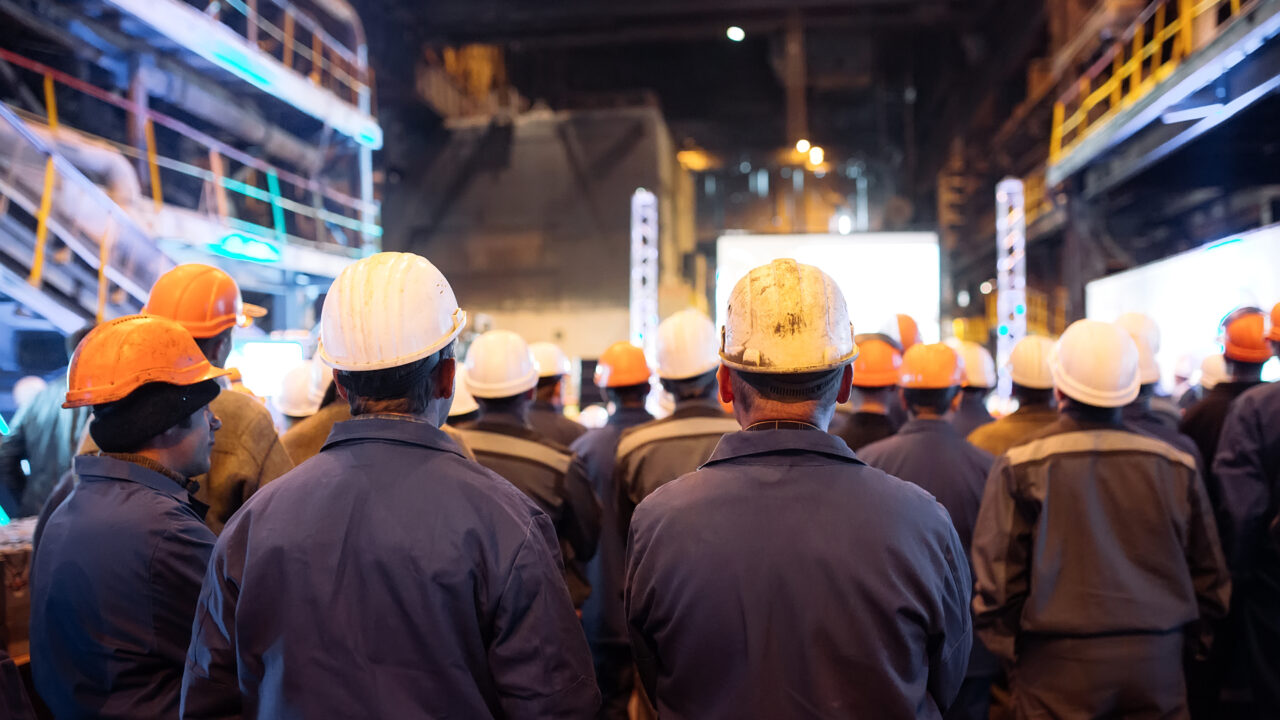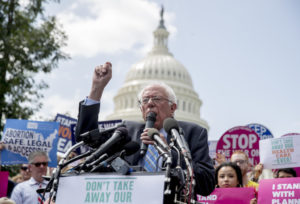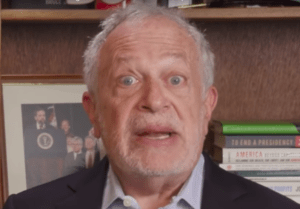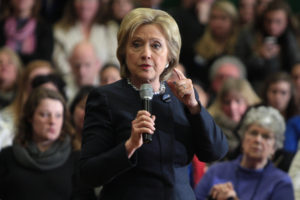Neither Major Party in the US Represents the Working Class
Is it possible to build a political party that truly speaks to the needs of working people in an era of runaway inequality and incessant mass layoffs? Image: Adobe
Image: Adobe
A quarter century ago, the late labor leader Tony Mazzocchi issued a dire warning. Unless a labor party was created, working people would abandon the Democrats and flock towards authoritarians who would promise job protections and economic stability. Mazzocchi found enormous resonance among workers when he declared, “The bosses have two parties. We need one of our own.”
That rings even more true today for many working-class people. But is it possible to build a political party that truly speaks to the needs of working people in an era of runaway inequality and incessant mass layoffs?
Because neither Mazzocchi nor other labor leaders wanted to create a spoiler party that would siphon off Democratic votes and elect Republicans, the idea never found a way to gain significant traction. But the opportunity to create a new party would be more likely if one of the two major parties imploded, which might be happening right now to the Republican Party as it wallows in the fantasy world of Trump’s election lies and conspiracies.
“The bosses have two parties. We need one of our own.”
Liz Cheney, the former number-three ranking Republican leader in the House of Representatives and the daughter of George W. Bush’s vice president Dick Cheney, has impeccable conservative bona fides. But she no longer has a home in a party dominated by Trump acolytes. After voting to impeach President Trump and having co-chaired the January 6th congressional investigation, she lost her Wyoming seat in the House to a MAGA Republican.
Cheney is currently considering a third-party presidential run which, in effect, would create a second Republican Party. Because she sees Trump as a clear and present danger to democracy, she wants to defeat him by denying him ‘moderate’ Republican votes. (These days the definition of a ‘moderate’ seems to be anyone who accepts that Joe Biden won the 2020 election.)
She is aware that her presidential run could launch a rival Republican party, but said, “I don’t know if our party can be saved. We may need to build a new party.” And so, it is conceivable we could soon have three major parties—the Democrats, the Trump Republicans, and the Cheney Republicans.
Which of these is the party of the working class?
Not the Cheney Republicans. Her party would draw the corporate never-Trumpers who also are fiscal conservatives, seeking to balance the federal budget and trim social welfare programs. These corporate Republicans would have little use for labor unions and labor law protections. They would stand in opposition to raising the minimum wage and would oppose facilitating union organizing. They would also likely advocate for an increase in the Social Security retirement age, which harms many in the working class who tend to die younger than higher-income people. As a result, it’s highly doubtful that Cheney and her backers would be able to attract much working-class support or that of any labor unions.
The Democrats might be feeling cocky from a Republican Party implosion. That should make it much easier for Democrats to retain working-class support. Then again, there is the risk that the Democrats might move even closer to Wall Street as the Cheney party becomes a serious competitor for the backing of wealthy financiers who are socially liberal and alienated by MAGA. Unlike the Democrats, Cheney wouldn’t have to straddle between supporting policies that enrich the well-to-do while also claiming to support the working-class.
Starting with Bill Clinton, the competition for Wall Street cash pulled the Democrats further away from the working class, who the Dems thought had no place else to go. It could happen again.
Moving even closer to Wall Street could compound the difficulties that the Democrats already have. Not only are white working-class voters moving away from the Democrats, but so are Black and Hispanic voters. Biden’s support among non-white voters has fallen from the 70 percent he received in 2020 against Trump, to 53 percent today. And the decline has been dramatic among non-white voters with no college education and whose incomes are less than $50,000 per year. Many of those voters are unlikely to rush toward the Trump or Cheney Republicans, but they might instead sit out the election, which would be enormously harmful to the Democrats.
This creates an opportunity for the Trump Republicans to draw working-class voters by focusing on job security. But the Republicans seem fixated on culture wars and therefore run the risk of alienating working-class people of all shades and ethnicities who have become more liberal since 2010 on key social issues, including immigration. The research done for my book, Wall Street’s War on Workers, strongly suggests that the number one working-class issue is job security, not critical race theory, not gendered bathrooms, or Mickey Mouse. Taking on corporate power has resonance, and for good reason. These workers have suffered through nearly 30 million mass layoffs since 1996.
Not only are white working-class voters moving away from the Democrats, but so are Black and Hispanic voters.
Right-wing Republicans have made a handful of selective anti-corporate gestures. Sen. J.D. Vance (R-Oh.) is going after Silicon Valley corporations over privacy issues and wants to break them up. Sen. Marco Rubio (R-Fla.) is pushing legislation to help shareholders change corporate woke policies. Sen. Josh Hawley (R-Mo.) even introduced a bill to get corporate money out of politics. Also, there are Republican attacks against corporations over diversity policies. There are attacks against corporate climate change-oriented investment policies, and even attacks against Disney for opposing legislation that would be harmful to the LGBTQ+ communities in Florida. But if you have had the stomach to listen to the Republican presidential debates you have heard the candidates competing to flash their anti-labor credentials, too.
It’s unlikely that the current flock of Trump Republicans will accelerate working-class support. But that could change in a hurry if they dared to attack corporate mass layoffs, the way Trump did by successfully pressuring the Carrier Corporation to refrain from moving a facility from Indiana to Mexico in 2017.
A much better outcome for the working class and the country would be for the Democratic Party to attack wasteful mass layoffs caused by stock buybacks and leveraged buyouts. When GM recently announced a $10 billion stock buyback designed to please Wall Street, the Democrats were silent. They missed an opportunity to hold the company to account for enriching Wall Street instead of investing more in clean car research and development. Rather than compete with Tesla, the top officers and Wall Street hedge funds pocketed the money. Stock buybacks before 1982 were considered stock price manipulation. The Democrats should call for their elimination.
Allow me to walk out on a limb and make an early projection: The party with the nerve to take on Wall Street and fight against each and every mass layoff is likely to become the party of working people.
Having worked all my adult life in support of labor, it saddens me even to speculate about a battle for the allegiance of the working class between the corporate Democrats and the right-wing Republicans. It just shows how far the Democrats have drifted away from the real needs of working people.
And sadly, Tony Mazzocchi’s statement may soon need amending: “The bosses have three parties: we need one of our own.”
Your support matters…Independent journalism is under threat and overshadowed by heavily funded mainstream media.
You can help level the playing field. Become a member.
Your tax-deductible contribution keeps us digging beneath the headlines to give you thought-provoking, investigative reporting and analysis that unearths what's really happening- without compromise.
Give today to support our courageous, independent journalists.





You need to be a supporter to comment.
There are currently no responses to this article.
Be the first to respond.